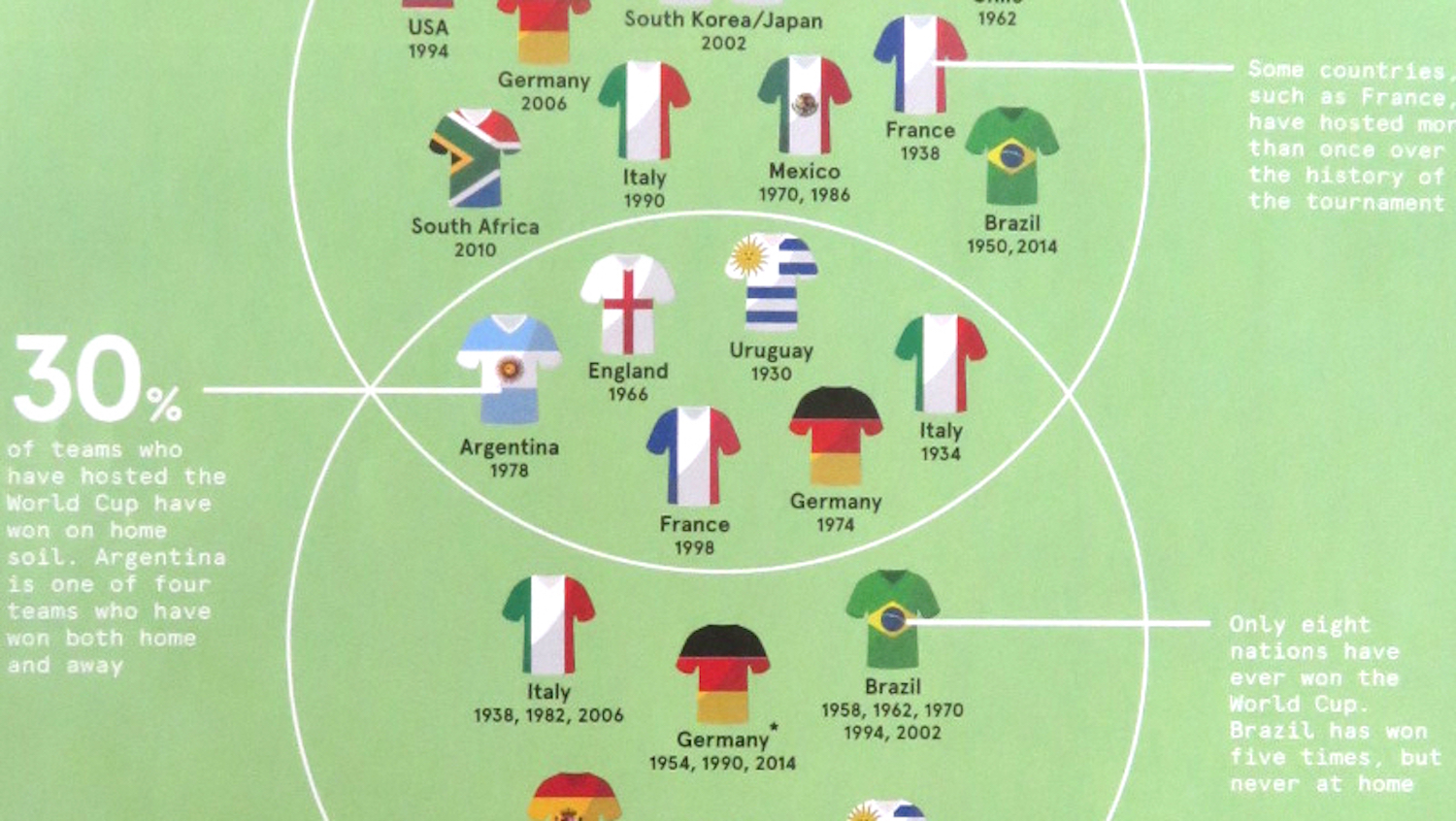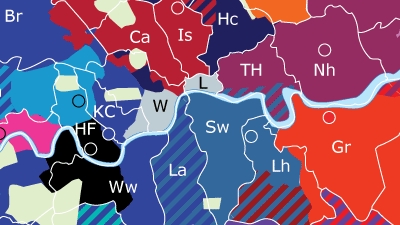Do these pictures prove tennis is dead?

- Photos taken from Wimbledon’s Centre Court over the last 50 years show less wear and tear in “volley valley.”
- The photos parallel a change in the game, from the serve-and-volley style of the 1970s and 80s to one dominated by powerful serves and returns.
- While there are many potential reasons for the shift, nostalgic fans no doubt pine for the dynamic games of yesteryear compared to the static ones of today.
For some nostalgic fans, the four images below prove that professional tennis is dead — at least as a spectator sport. Taken over the past half-century, they map changes in the pattern of wear and tear on the turf at Wimbledon’s Centre Court during the annual tournament.
The 1970 picture (top left) shows the grass played to a pulp all over the court, from baseline to net. In 1980 (top right), turf damage is visible in a T-shaped zone beyond the baseline. This damage to “volley valley” largely evaporates by 2005 (bottom left). By 2023 (bottom right), the service boxes appear entirely untouched, with only the baseline area showing wear and tear.
Those changes are evidence of a change in the game itself: from the dynamic serve-and-volley style of the 1970s and 80s to an increasingly static game dominated by powerful serves and returns from the baseline, a shift that began around the turn of the century. For fans longing for the days of serve-and-volley greats like John McEnroe or Martina Navratilova, that makes today’s tennis far too boring in comparison.
Why the change?
An oft-cited reason is the switch from wooden rackets to ones made from lighter materials (metal, carbon fiber, graphite, and other advanced components). Because wooden rackets are heavier, it was much harder for players to finish a point from the back of the court, which forced them to approach the net. But when wooden rackets grew out of fashion by the mid-1990s, players shifted their play style to emphasize strength at the baseline rather than finesse at the net.

While that may be partly true, it’s not the whole story. For one, many professional players — including serve-and-volleyers like McEnroe — used lightweight rackets from the 1970s and early 80s.
There were other factors, too. By the late 1980s, Wimbledon was the only remaining major championship played on grass — the only surface where serve and volley is a useful technique. As a result, the focus on serve and volley among high-ranking players declined.
Another change was driven by the studded footwear first championed by Björn Borg. While it provides a better grip on grass, it is obviously harder on the turf, which is one reason why Wimbledon switched to perennial ryegrass in 2001. Although more durable, it also creates slower conditions that favor a backcourt game.
It’s also possible that these pictures overstate the change. Beyond more durable grass, Wimbledon has also added more courts to the tennis complex since the 1990s, meaning fewer games need to be played at Centre Court. Ergo: less wear and tear.
So, if serve-and-volley isn’t as dead as these images suggest, could the style stage a comeback? One line of thinking says no. The advanced technology of rackets, strings, and balls points only toward more baseline bashing. Correspondingly, today’s top tennis players are more athletic than their 1980s counterparts, who look pudgy or scrawny by comparison.
Then again, perhaps it’s not just a matter of materials development, but also of talent and inclination. If another great serve-and-volley talent stands up and starts winning, tennis may revert to a more dynamic game style — pleasing more fans and killing more grass.
Images found here at Massimo’s X feed.
Strange Maps #1250
Got a strange map? Let me know at strangemaps@gmail.com.
Follow Strange Maps on X and Facebook.





